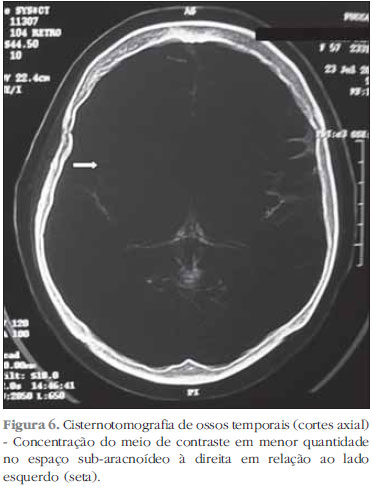INTRODUCTION: The spontaneous otological CSF leaks are rare entities. Usually they manifest themselves in children with meningitis and deep sensorineural hearing loss and in adults with middle otitis and effusion clinical picture. OBJECTIVE: To describe the clinical picture, diagnosis and surgical treatment of a patient with CSF otological. CASE REPORT: A female sex patient, 57 years old, with hearing loss, aural fullness and right ear tinnitus case history 10 years ago. After insertion of tympanostomy tubes on the right in another service, it began liquid, transparent and constant otorrhea in large quantities. The diagnosis was performed by suggestive cisternoscintigraphy of CSF leak, and by cisternography that showed that the area of bone dehiscence in the tegmen tympani region to the right, partial opacification of mastoid cells and middle ear to the right, besides concentration of contrast medium in sub-arachnoid space to the lower right compared to the left side. Through transmastoid via was located the CSF leak and meningoencephalocele in the region of the right tegmen tympani. The closure of the fistula was accomplished through the use of the temporal muscle flap, fibrin glue and Surgicel®. FINAL COMMENTS: In adults with symptoms suggestive of recurrent otitis media with effusion, the diagnosis of CSF fistula should be raised. The research should proceed with imaging, highlighting the CTC. Surgical treatment in this patient using the transmastoid technique has proved effective in the short and long term.
CSF otorrhea; fistula; meningitis






